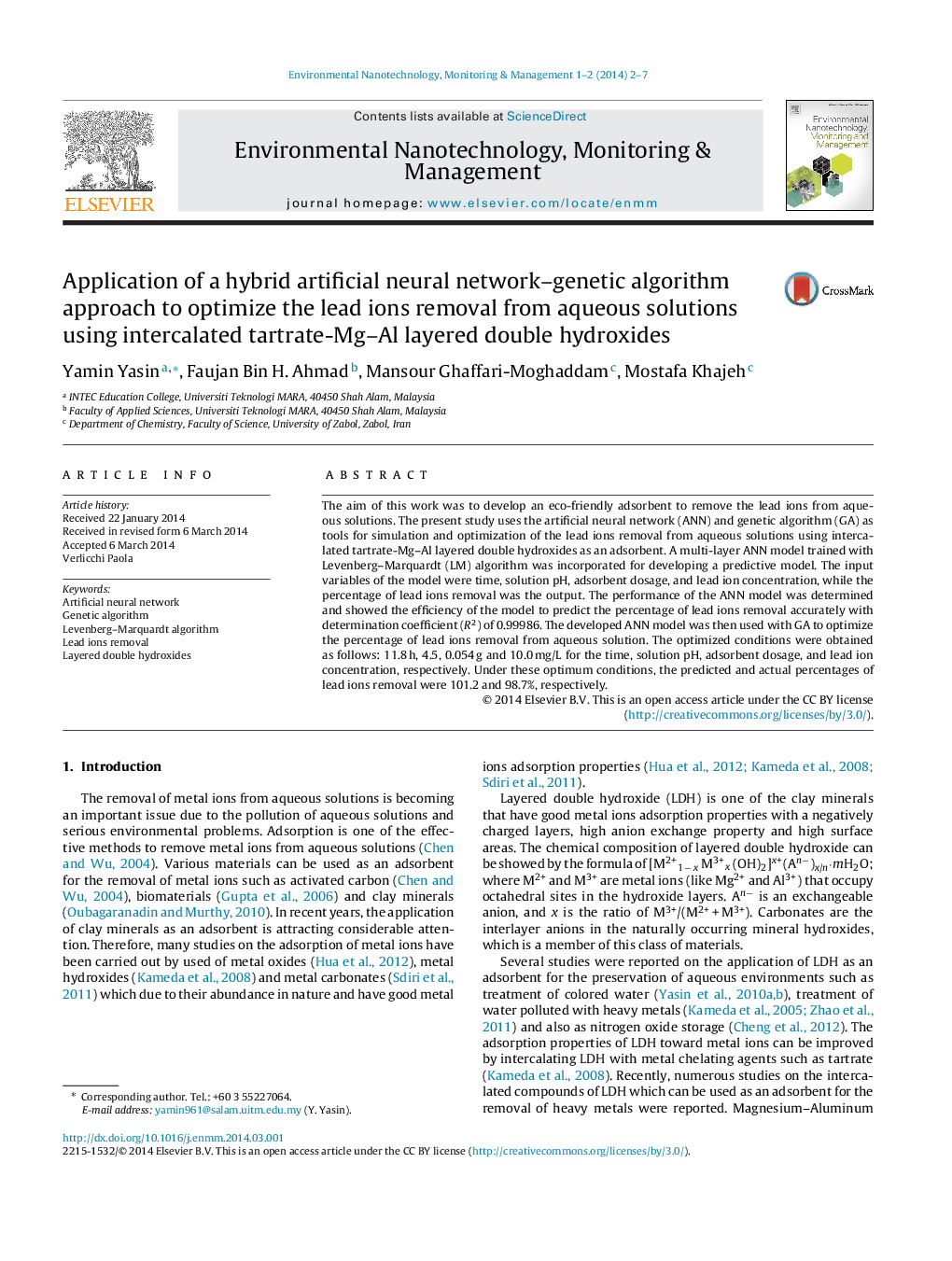| Article ID | Journal | Published Year | Pages | File Type |
|---|---|---|---|---|
| 4424227 | Environmental Nanotechnology, Monitoring & Management | 2014 | 6 Pages |
•Application of an adsorbent to remove the lead ions from aqueous solutions.•Modeling of lead ions removal from aqueous solutions using artificial neural network.•Optimization of the removal process by combination of artificial neural network and genetic algorithm.
The aim of this work was to develop an eco-friendly adsorbent to remove the lead ions from aqueous solutions. The present study uses the artificial neural network (ANN) and genetic algorithm (GA) as tools for simulation and optimization of the lead ions removal from aqueous solutions using intercalated tartrate-Mg–Al layered double hydroxides as an adsorbent. A multi-layer ANN model trained with Levenberg–Marquardt (LM) algorithm was incorporated for developing a predictive model. The input variables of the model were time, solution pH, adsorbent dosage, and lead ion concentration, while the percentage of lead ions removal was the output. The performance of the ANN model was determined and showed the efficiency of the model to predict the percentage of lead ions removal accurately with determination coefficient (R2) of 0.99986. The developed ANN model was then used with GA to optimize the percentage of lead ions removal from aqueous solution. The optimized conditions were obtained as follows: 11.8 h, 4.5, 0.054 g and 10.0 mg/L for the time, solution pH, adsorbent dosage, and lead ion concentration, respectively. Under these optimum conditions, the predicted and actual percentages of lead ions removal were 101.2 and 98.7%, respectively.
